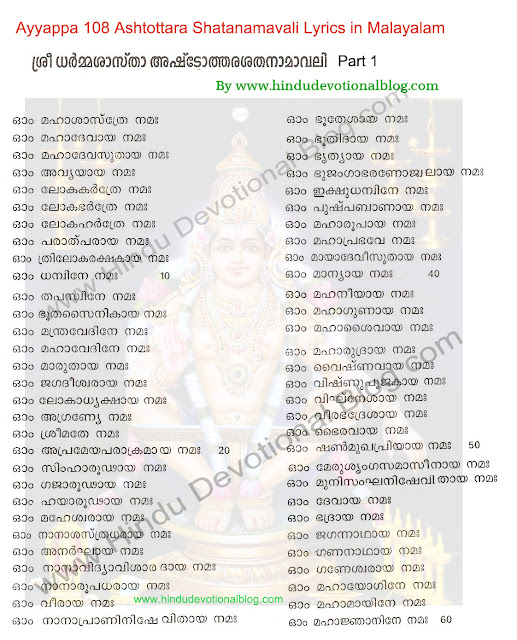

The Ashta Bhairavas control the eight directions of this universe. The major eight Bhairavas are called Aṣṭāṅga Bhairavas. These 64 Bhairavas are grouped under eight categories and each category is headed by one major Bhairava. Some forms of Bhairava are guardians of the eight cardinal points. In some of the ancient texts he is said to have thirty two hands, the shape of a bird, golden complexion, terrible teeth, and a human form above the hip. Performing pūja on Tuesdays gives quick results. He has four hands, one of which he holds a golden vessel. One of his forms is called Svarṇākarṣṇa Bhairava In this form, he has red or blue complexion and is clothed in golden dress. In Kashmir Shaivism, Bhairava is the ultimate form of manifestation or pure "I" consciousness. There are eight types of flowers and leaves used in archana (अर्चन) to Bhairava. The most appropriate time is a Friday midnight. At midnight it is said that Bhairava and his consort Bhairavi will give darśana (appearance) to their devotees. The right time to pray to Bhairavi is midnight.

If a Bhairava idol is facing west, it is good facing south is moderate facing east is not good. Devotees offer what is understood to be favored by Bhairava: a ghee bath ( abhiṣeka), red flowers, ghee lamp, unbroken coconut, honey, boiled food, fibrous fruits etc. In all Shiva temples, regular puja (reverence) rituals begin with Surya and end with Bhairava. His weapons, the dog, protruding teeth, terrifying looks, and a garland with red flowers all give him a frightening appearance. In some forms of Bhairava, there are more than four hands. His weapons are drum, pāśa (noose), trident and skull. He appears in a standing position with four hands. Normally in Shiva temples, idols of Bhairava are situated in the north, facing Western direction. From these Ashta Bhairavas and Ashta Matrikas, 64 Bhairavas and 64 Yoginis were created. These Ashta Bhairavas and Ashta Matrikas have dreadful forms. These Ashta Bhairavas married Ashta Matrikas. To eradicate the demons, Shiva created Kala Bhairava from whom Aṣṭāṅga Bhairavas were created. In this version there was a war between gods and demons. The Puranas also give a version of Bhairava. Since Bhairava was thus created by Shiva, he is said to be one of the sons of Shiva. From this merged form of Shiva, Bhairava appeared in his eight forms ( Aṣṭāṅga Bhairavas). Shiva made both Kali and the child to merge with him.

After killing the demon, her wrath metamorphosed as a child. Parvati took the form of Kali to kill him. There was one demon by name Dahurāsura who got a boon that he could be killed only by a woman. There is another school of thought which says that Shiva himself created Bhairava. Each Shaktipeeth is accompanied by a temple dedicated to Bhairava. In the form of the Kala Bhairava, Shiva is said to be guarding each of these Shaktipeeth (Shakti temples). From then on, he became useful to himself and to the world, and deeply grateful to Shiva. The skull ( Kapala) of Brahma is held in the hands of Kala Bhairava, Brahma's ego was destroyed and he became enlightened. Consequently, Shiva threw a small hair from his head which assumed the form of Kala Bhairava and casually went to cut off one of Brahma's heads. Additionally, he began to forget the work of Shiva and also started interfering in what Shiva was supposed to be doing. I can do everything that Shiva does and therefore I am Shiva." Brahma became a little egotistical as a result of this. One day, Brahma thought "I have five heads. In it, Vishnu inquired of Brahma, "Who is the supreme creator of the Universe?" Arrogantly, Brahma told Vishnu to worship him as Supreme Creator. The origin of Bhairava can be traced to a conversation between Brahma and Vishnu which is recounted in the Shiva Mahapuranam. Therefore, he becomes the ultimate or the supreme. Therefore, Bhairava is the one who creates, sustains and dissolves the three stages of life. There is also another interpretation: Bha means creation, ra means sustenance and va means destruction. These enemies are dangerous as they never allow humans to seek God within. One interpretation is that he protects his devotees from dreadful enemies, greed, lust and anger.

It is also known as one who destroys fear or one who is beyond fear. Bhairava originates from the word bhīru, which means "fearsome".


 0 kommentar(er)
0 kommentar(er)
